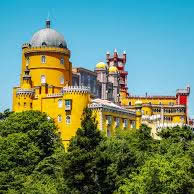Lisbon, the vibrant and historic capital of Portugal, is a city shaped by its geography, culture, and centuries of history. One of the most defining characteristics of Lisbon is its Seven Hills, an iconic feature that has influenced urban development, transportation, and even the city’s identity.
Much like Rome, Lisbon is said to have been built on seven hills, a notion that has been part of its legend and historical narrative for centuries. These hills offer breathtaking views, house some of the city’s most famous landmarks, and are home to charming neighborhoods with distinct personalities.
This article will explore Lisbon’s Seven Hills, their history, significance, and the key attractions that make each of them unique.
1. The Legend of the Seven Hills of Lisbon
The idea that Lisbon was built on seven hills dates back to the 17th century, when Friar Nicolau de Oliveira wrote the book Livro das Grandezas de Lisboa (Book of the Greatness of Lisbon). He drew a comparison between Lisbon and Rome, both of which are said to be constructed on seven hills.
However, Lisbon’s geography actually features more than seven hills, but the tradition has remained, shaping the way people perceive the city’s topography.
The Seven Hills of Lisbon are:
Castle Hill (Colina do Castelo)
São Vicente Hill (Colina de São Vicente)
Sant’Ana Hill (Colina de Sant’Ana)
Santo André Hill (Colina de Santo André)
Chagas Hill (Colina das Chagas)
Santa Catarina Hill (Colina de Santa Catarina)
São Roque Hill (Colina de São Roque)
Each of these hills contributes to Lisbon’s scenic landscapes, historical landmarks, and cultural charm.
2. The Seven Hills of Lisbon
2.1. Castle Hill (Colina do Castelo)
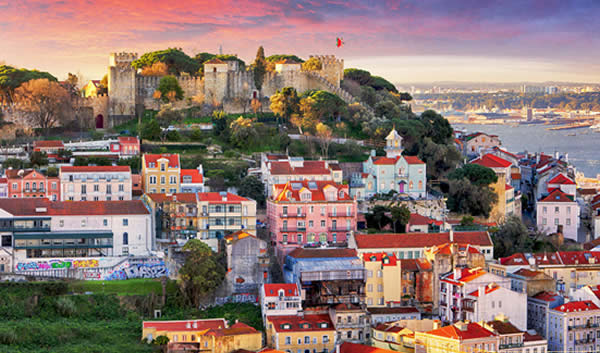
Perhaps the most famous of all, Castle Hill is home to the Castelo de São Jorge (Saint George’s Castle), one of the city’s most iconic landmarks. This hill has been a strategic point since Roman times and later became a fortress for the Moors until the Christian reconquest of Lisbon in 1147.
Key Attractions on Castle Hill:
Castelo de São Jorge – Offers spectacular panoramic views of Lisbon.
Alfama – Lisbon’s oldest neighborhood, known for its narrow streets, traditional Fado music, and historic charm.
Miradouro de Santa Luzia – A stunning viewpoint with beautiful tiles and gardens.
2.2. São Vicente Hill (Colina de São Vicente)
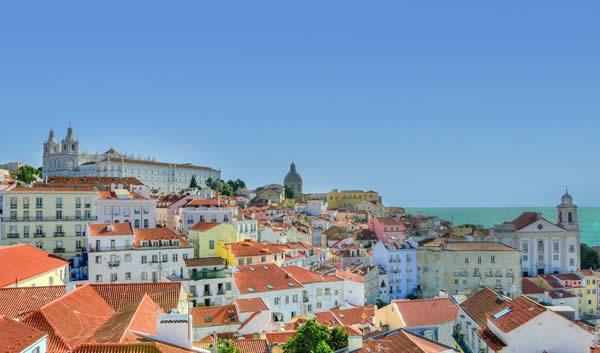
São Vicente Hill is home to some of Lisbon’s most historically significant sites, particularly related to religion and national heritage.
Key Attractions on São Vicente Hill:
Mosteiro de São Vicente de Fora – A 16th-century monastery that houses the royal pantheon of the Braganza dynasty.
National Pantheon (Panteão Nacional) – The final resting place of notable Portuguese figures such as Amália Rodrigues.
Feira da Ladra – Lisbon’s famous flea market, held twice a week.
|
2.3. Sant’Ana Hill (Colina de Sant’Ana)
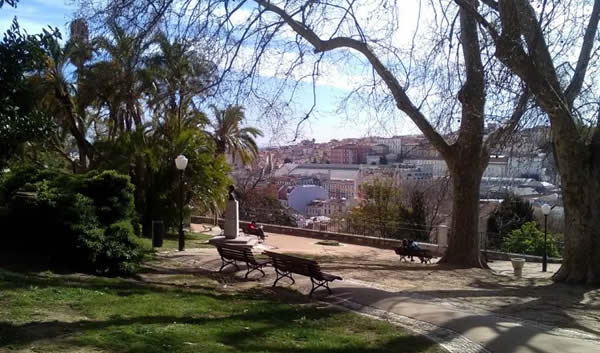
Located between Martim Moniz and Campo dos Mártires da Pátria, this hill is quieter and is known for its historical hospitals, academic institutions, and peaceful streets.
Key Attractions on Sant’Ana Hill:
Hospital de São José – A historic hospital dating back to the 18th century.
Jardim do Torel – A hidden gem with incredible views over Lisbon.
Palácio Galveias – A 17th-century palace that now serves as a public library.
2.4. Santo André Hill (Colina de Santo André)

This hill is famous for its stunning viewpoints, making it a popular destination for photographers and romantics.
Key Attractions on Santo André Hill:
Miradouro da Senhora do Monte – The highest viewpoint in Lisbon, offering a breathtaking panoramic view of the city.
Igreja da Graça – One of Lisbon’s oldest churches, dating back to the 13th century.
Bairro da Graça – A charming district with authentic Lisbon character and fewer tourists.
|
2.5. Chagas Hill (Colina das Chagas)
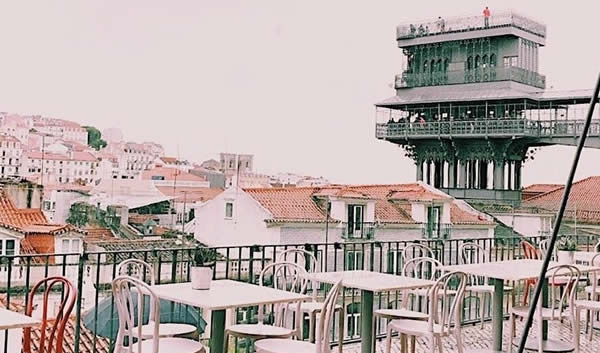
Named after an old church destroyed in the 1755 earthquake, this hill is located near Bairro Alto and Chiado, two of Lisbon’s liveliest neighborhoods.
Key Attractions on Chagas Hill:
Largo do Carmo – A historic square featuring the Carmo Convent ruins.
Elevador de Santa Justa – A famous 19th-century iron elevator offering one of Lisbon’s best viewpoints.
Bairro Alto – The city’s bohemian neighborhood, known for its nightlife and Fado music.
Read Also
Alfama: What to Visit in Lisbon’s Most Traditional Neighborhood
Do I Need to Book Tours in Lisbon in Advance?
How Public Transport Works in Lisbon
2.6. Santa Catarina Hill (Colina de Santa Catarina)
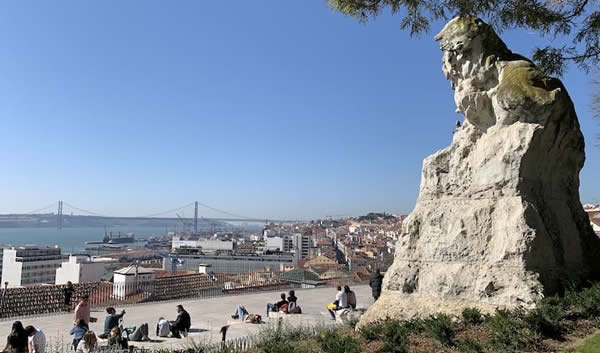
Santa Catarina Hill is a favorite meeting point for locals and tourists, thanks to its scenic views over the Tagus River.
Key Attractions on Santa Catarina Hill:
Miradouro de Santa Catarina (Adamastor) – A viewpoint known for its sunset views and lively atmosphere.
Palácio de Santos – A historic palace, now the French embassy.
Museu da Farmácia – A pharmacy museum showcasing the evolution of medicine.
2.7. São Roque Hill (Colina de São Roque)
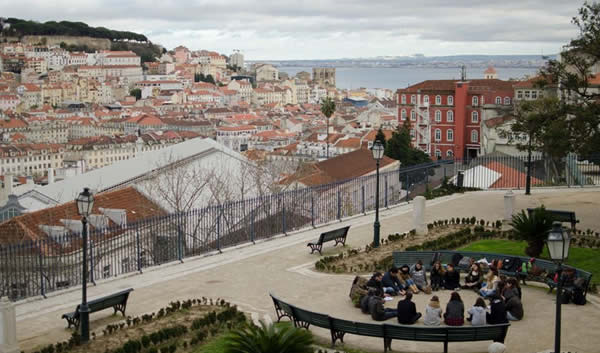
Situated between Bairro Alto and Chiado, this hill is home to some of the most important Jesuit heritage in Portugal.
Key Attractions on São Roque Hill:
Igreja de São Roque – One of the first Jesuit churches in the world, with a stunning interior.
Museu de São Roque – Houses an impressive collection of sacred art.
Bairro Alto – The heart of Lisbon’s nightlife, with bars, restaurants, and Fado houses.
3. The Importance of the Seven Hills in Lisbon’s Identity
The Seven Hills of Lisbon are more than just geographical features—they shape the city’s urban structure, transport systems, and cultural identity. The steep streets and slopes have led to the creation of unique modes of transportation, including:
Elevador de Santa Justa
Ascensor da Glória
Ascensor da Bica
Ascensor do Lavra
Moreover, the hills offer some of the best viewpoints in Europe, attracting visitors who want to admire Lisbon’s skyline, the Tagus River, and the iconic red rooftops.
Conclusion
The Seven Hills of Lisbon form the soul of the city, shaping its history, culture, and charm. Each hill tells a different story, featuring ancient castles, churches, miradouros, and historic neighborhoods.
Whether you’re exploring Alfama’s medieval streets, watching the sunset at Santa Catarina, or enjoying the vibrant Bairro Alto nightlife, Lisbon’s hills provide an unforgettable experience.
Visiting these seven legendary hills is the best way to understand the heart and soul of Lisbon.


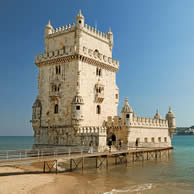 TAKE A LOOT AT OUR LISBON CITY TOUR
TAKE A LOOT AT OUR LISBON CITY TOUR